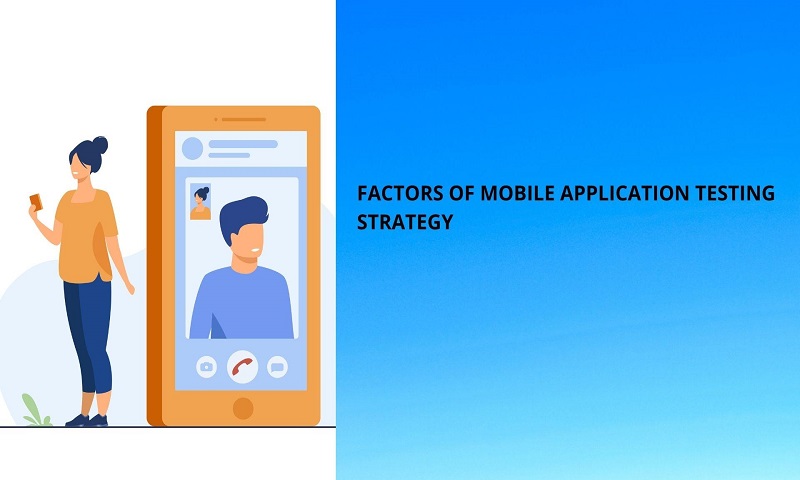Mobile apps have become irreplaceable for every nook and corner of our daily life. Whether for consumers or businesses or for personal needs, mobility has changed all facets of our living. But since there are too many apps and there is no respite for competition, app performance and user experience play a crucial role. This is why carrying out proper testing for mobile apps is so important.
For every mobile app development company, it is of extreme significance to test an app for accessibility, app security, and required features and functions. Remember before your app hits the market, there are already tonnes of apps representing the same niche. So, it is crucial to adopt a testing strategy and testing best practices to launch an awesome app devoid of glitches and shortcomings.
Here we are going to discuss some of the tried and tested testing techniques and testing principles that stood the test of time for years.
Have clear testing objectives
App testing and development activities should be able to focus on adhering to the business goals. Just in sync with the purpose of the app you have already figured out you should have a testing approach. The app testing should focus on ensuring the expected project outcomes more than anything else. For example, a game app needs to be tested for compatibility across devices for allowing players to have a smooth game-playing experience in the target devices. Certain tests work well with the test automation approach while there are apps that need manual testing.
The gross approach on Mobile App Testing is decided on the basis of the end objectives of the app project. Apart from the principal objectives, there are also several underlying objectives such as quicker time-to-market, low-cost development, and optimum test coverage. Since every app is unique the objectives and corresponding testing process to meet the expectations should address these unique attributes as well.
Carry Out Planned Test Automation
Although Test Automation is embraced by testers to lower the development costs and ensure optimum test coverage, the test automation nevertheless should be planned meticulously. Instead of blindly applying a test automation tool just for the sake of reducing efforts and cost, you need to make sure that the test automation perfectly suits the objectives behind the app project.
Make sure whether the testing tool ensures better device compatibility, app security, accessibility, and responsiveness. The test automation should ensure any aspect that can boost the app’s performance and competence in regard to its primary objective. It is also important to train your testing team for using the test automation tool for best testing results.
Give Priority to App Security
Cyber security and threats from malicious programs continue to cause bigger threats for business apps in general. The vulnerabilities to mobile apps are bigger because of the diverse third-party technologies and exposure to device hardware flaws. This is another area that should have a priority in the app testing strategy.
Certain security testing methods are widely popular such as ethical hacking, vulnerability testing, and scanning, risk assessment, malware penetration testing, Risk Assessment, security audit, etc. These security testing measures and steps can be very effective in safeguarding an app from all potential threats and issues.
Carrying out tests early and often
While traditional development always used to put testing at the end of the process, the latest application development methods such as agile or scrum always advocate testing early and often. By testing an app early and often the app can be made ready for the market quicker.
On top of that, this early testing approach ensures frequent releases and updates to take care of performance issues at any point in the life cycle of the app. On the other hand, testing early and often also results in addressing the actual feedback from time to time through value additions and changes. Frequent testing opens the door for more iteration and feedback in the development process.
Utilizing Emulators and Actual Mobile Devices
Ultimately an app is run on mobile devices and hence the user experience, as well as performance on the devices, needs to be tested thoroughly. Before an app goes live there are several different options for testing the app performance. Both emulators and simulators are widely used for testing the apps before they are released in the live environment. But using emulators and simulators has its own disadvantages and shortcomings. This is why most accomplished QA testing professionals always recommend testing the apps on the actual devices to evaluate app performance and responsiveness.
When an app is tested on actual devices, the results offer credible insights and findings on the compatibility of the app on different devices and networks. The approach is particularly essential when certain apps are built particularly focusing on unique features of some flagship phones. There are many gaming apps and AR/VR apps that are built for particular device screens.
Ultimately it is upon an effective mobile app testing strategy to determine the particular devices, mobile operating systems, and different network configurations. By defining these device-OS-network combinations for the app, testers can focus upon particular results the test needs to achieve.
Conclusion
According to the latest research, the worldwide market for mobile app testing services now is experiencing fast-paced growth as the app volume is increasing and the role of QA testing is becoming crucial for app success. The focus on app testing is not going to fade away anytime soon. The future of app testing will be ruled by the above-mentioned practices that have been tried and tested across a wide spectrum of successful app projects.
Guest Post Service By www.guestarticlehouse.com




